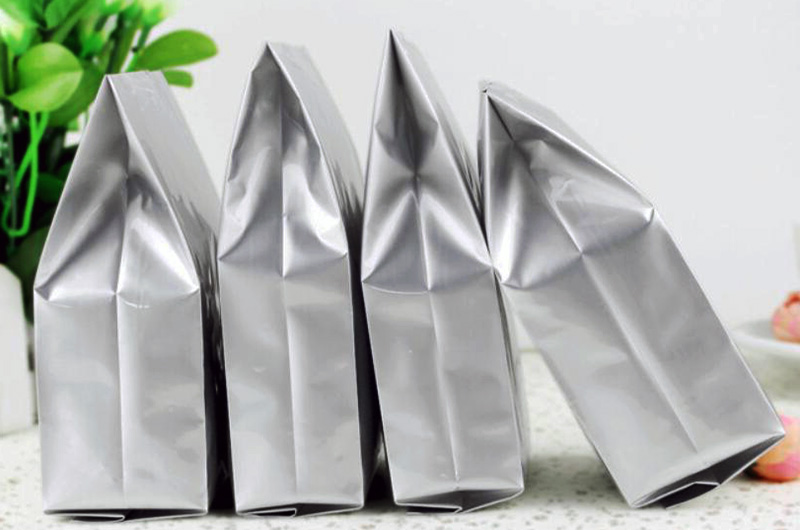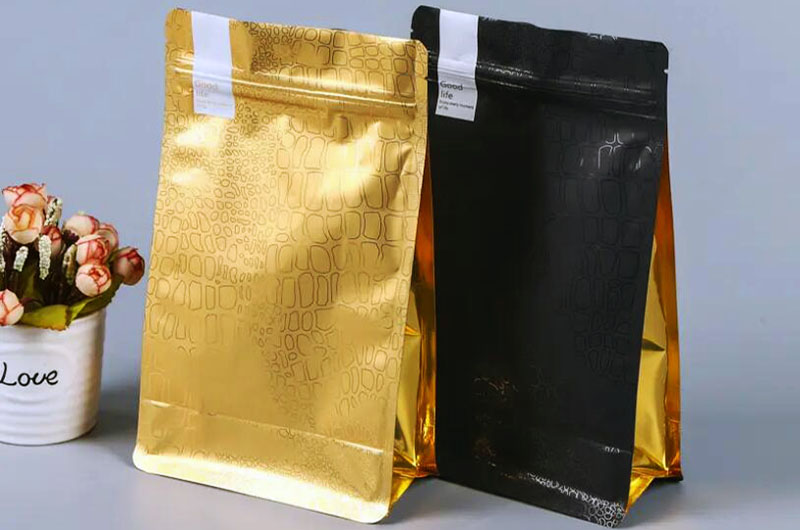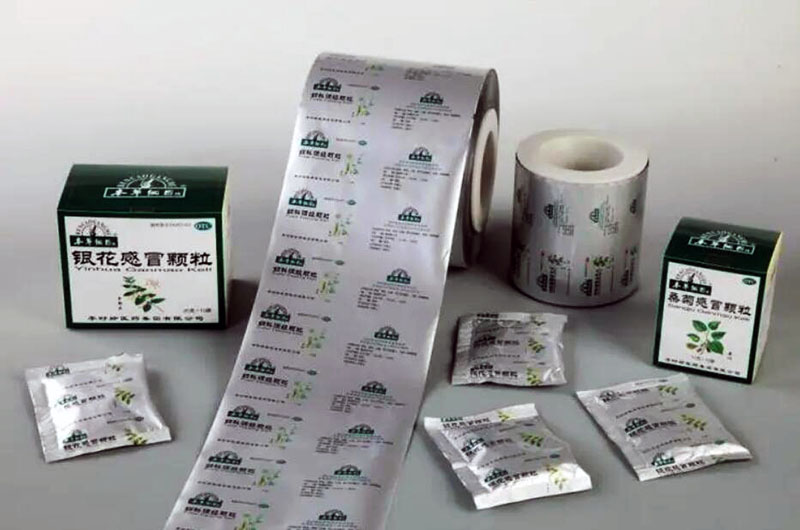- Flexible Packaging Material Composition
- Key functions of aluminum foil in flexible packaging
- Specifications for Aluminum Foil for Flexible Packaging
- Performance of Flexible Packaging Aluminum Foil
- Applications of Flexible Packaging Aluminum Foil
- Flexible Packaging Aluminum Foil Manufacturing Process
- Environmental Impact and Sustainability
- Conclusion
Flexible packaging has become a revolutionary solution in the field of packaging materials, providing a versatile and adaptable alternative to traditional packaging methods.
Among the many materials used in flexible packaging, aluminum foil stands out as the leader. Its unique combination of properties makes it ideal for a variety of applications, from food packaging to pharmaceuticals.
Flexible packaging refers to materials that are composed of aluminum foil and a variety of different base materials to form a structure to package specific goods. Commodity foils serve the flexible packaging industry by providing the ultimate moisture and vapor barrier in the form of aluminum foil.

Flexible Packaging Material Composition
Aluminum+substrate
Substrates include: PET, PE, PA and PP films, paper, cardboard
- Common painted substrates (blisters, chocolate, cheese...)
- Printing substrate (surprise eggs, chocolate coins...)
Key functions of aluminum foil in flexible packaging
1. Gas barrier function
One of the primary functions of aluminum foil in packaging is to provide an excellent gas barrier, including shielding against oxygen and air. This property makes aluminum foil an ideal packaging material for many products susceptible to oxidation, such as food and pharmaceuticals. By effectively blocking out external gases, aluminum foil helps extend the shelf life of your products, ensuring their freshness and quality.
2. Water vapor barrier function
Another important function of aluminum foil is to provide a water vapor barrier. The ability to shield against moisture makes aluminum foil very useful when packaging moisture-sensitive products, such as pharmaceuticals and certain foods. By blocking humidity, aluminum foil protects products from moisture and moisture, thus maintaining their quality and stability.
3. Light barrier function
Aluminum foil also exhibits excellent light barrier properties, which is critical in protecting products from light damage. Particularly in food and pharmaceutical packaging, photosensitive ingredients can be damaged by exposure to light. Aluminum foil reduces this potential risk by reflecting and absorbing light, ensuring product quality is not affected by light.
4. Mechanical properties and structural rigidity
Aluminum foil is not only an excellent barrier material, but also provides the required mechanical properties and structural rigidity to the packaging. Its softness makes aluminum foil easy to process into different shapes and suitable for various packaging needs. At the same time, its structural rigidity ensures that the package maintains its shape during transportation and handling, effectively protecting the product within the package.
5. Maintenance of final packaging
The bending and malleability of aluminum foil make it ideal for final packaging. It can be easily folded, wrapped or formed to provide products with compact, secure packaging. This flexibility allows aluminum foil to play an important role in packaging of many shapes and sizes.

Specifications for Aluminum Foil for Flexible Packaging
- 1) Grade: 8011, 8079, 1235, etc.
- 2) Thickness: 0.006mm - 0.009mm
- 3) Width: up to 1850mm
- 4) Inner Diameter: 3 inches to 6 inches
- 5) Temper: O soft
Performance of Flexible Packaging Aluminum Foil
1. Barrier performance
One of the main reasons why aluminum foil is widely used in flexible packaging is its excellent barrier properties. The material acts as an impermeable barrier against moisture, light, oxygen and other contaminants, ensuring the integrity of the packaged product.
2. Thermal conductivity
Aluminum foil's excellent thermal conductivity allows for effective heat sealing, helping to preserve freshness and extend the shelf life of perishable goods.
3. Flexibility and formability
Aluminum foil's inherent flexibility and formability make it an ideal material for creating a variety of packaging shapes and sizes. This adaptability allows efficient packaging of products with different geometries.
4.Reflectivity
Aluminum foil’s highly reflective properties make it an effective material for protecting products from harmful ultraviolet (UV) rays, which is critical to maintaining the quality of light-sensitive items.
Applications of Flexible Packaging Aluminum Foil
Food flexible packaging aluminum foil
Aluminum foil is widely used in food packaging as it protects against external factors and maintains the freshness of perishable items. It is commonly found in bags, packaging materials and containers of various food products.
Pharmaceutical flexible packaging aluminum foil
The pharmaceutical industry relies on aluminum foil for blister packaging of tablets and capsules. The material's barrier properties ensure the medication is protected from moisture, light and air.

flexible laminate
Aluminum foil is often laminated with other materials, such as plastic films and paper, to form flexible laminates. These laminates can be used to package a variety of products, including snacks, beverages and personal care products.
Insulation and heat sealing
The thermal conductivity of aluminum foil makes it an excellent material for thermal insulation applications, including the insulation of buildings and HVAC systems. Additionally, its heat sealing capabilities are crucial in the packaging process across various industries.
Flexible Packaging Aluminum Foil Manufacturing Process
1.Rolling process
Aluminum foil is usually produced through a rolling process. This involves passing the aluminum sheet through a rolling mill, reducing its thickness to the desired level. The resulting thin, flexible sheet is then wound onto large rolls for further processing.
2. Annealing
Annealing is a crucial step in aluminum foil production. The process involves heating the foil to a specific temperature and then gradually cooling it. Annealing enhances the flexibility and softness of the foil, making it suitable for a variety of packaging applications.
3.Lamination and coating
To enhance its barrier properties, aluminum foil is often laminated with other materials such as plastic films. Coating processes can also be used to impart specific functionality, such as enhanced adhesion or resistance to external elements.
Environmental Impact and Sustainability
1. recyclability
Aluminum foil is highly recyclable, and the recycling process consumes far less energy than primary aluminum production. The recyclability of aluminum foil helps reduce the environmental impact associated with packaging materials.
2. lightweight nature
The lightweight nature of aluminum foil makes it an environmentally friendly choice, as it reduces transport-related emissions and fuel consumption compared to heavier packaging materials.
3. life cycle assessment
A comprehensive life cycle assessment (LCA) of aluminum foil for flexible packaging reveals its environmental footprint, taking into account factors such as raw material extraction, production process, transportation and end-of-life treatment. This analysis helps understand and mitigate environmental impacts.
Conclusion
Flexible packaging foil is a backbone in the dynamic world of packaging materials. Its exceptional combination of properties, from barrier capabilities to adaptability, has led to widespread adoption across a variety of industries.
With sustainability taking center stage, aluminum foil’s recyclability and lightweight properties make it a responsible choice for the future. Ongoing research and innovation in this area promises exciting developments, ensuring that flexible packaging foils continue to play a vital role in shaping the future of packaging solutions.
